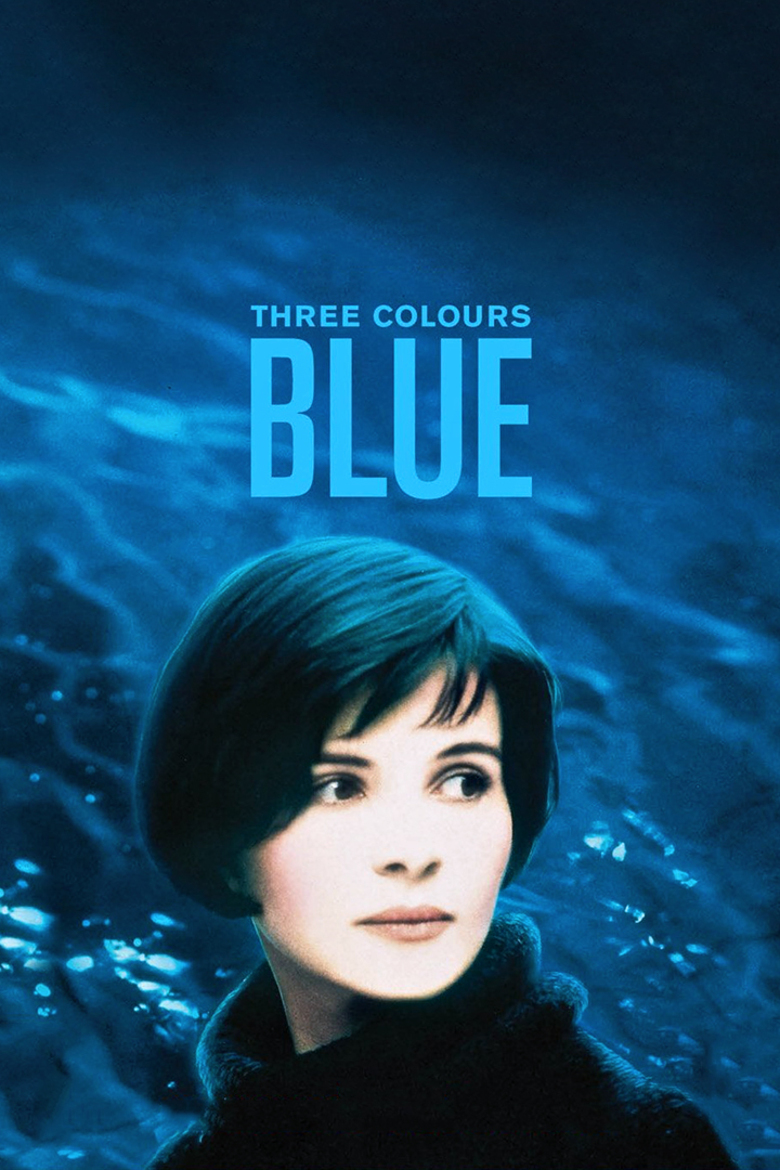Summary:
A woman must find a way to carry on after the death of her husband and child.
My Thoughts:
Even though Kieslowski’s Three Colors Trilogy is meant to be a symbolic of the colors on the French Flag, and the colors themselves are meant to stand for three political ideals of the French revolution (liberty, equality, and fraternity), I decided to tackle the Trilogy for the Polish leg of our World Tour Series because Kieslowski is Polish, and the second film (“Three Colors: White”) is set in Warsaw.
The first film in Kieslowski’s trilogy is “Blue,” which is a tragic film about Julie (Juliette Binoche, “Chocolat”), the wife of a famous composer, whom has to find a way to carry on after her husband and child are both killed in an accident, which she miraculously survives. This film represents liberty, as Julie is forced to try to find a way to live independently after everything she loves is ripped from her. As she tries to recover, she comes in contact with another composer named Olivier (Benoit Regent, “Three Colors: Red”) who had been a friend to her and her husband. Her husband’s last work was left unfinished, and it was meant to be played at an upcoming ceremony.
I think the best part of this film is the direction and writing. Most of this film is about feeling directionless and hopeless after a tragedy, and not knowing what to do with oneself, not knowing how to cope. I’ve read that people have interpreted this film as an anti-tragedy, and I could absolutely see that, because when her family dies, Julie’s character shuts down, but not in a typical way. Julie’s character seems driven to forget about what has happened, so much so that she doesn’t even seem to really process the tragedy that’s happened to her. Even though we have never met the person she was before the accident, we can tell that she has become a different person than she used to be from the interactions she has with characters that knew her before. Kieslowski’s direction is amazing because he’s able to capture the feeling of isolation through his framing, and the colors he chooses to use. Oftentimes, Julie’s character is partially obscured, or the upper half of the frame will be shrouded in darkness, as if she is hiding away her emotions, or if a dark cloud of depression hangs above her.
Binoche herself is spellbinding as Julie. It’s hard to play emotionless without being boring. Julie goes into her emotionless state and doesn’t outwardly change much at all, but through some of her interactions with others, we get glimpses into her psyche. She doesn’t cry or sob when her child and husband die, but she will call an old friend up for sex and then discard him immediately. However, after that, she felt horrible about doing it, as shown by the scene where Julie drags her knuckles across a brick wall. Throughout this time, Julie puts up a stoic front, even when she’s alone, but slowly, as time goes by and more things come out about her husband, Julie starts to let down her defenses. It really speaks to Binoche as an actor that she is able to show this subtle growth in character, for the way she processes grief is so muffled that it takes someone of her quality to make those subtleties shine through.
I actually loved the way that this story progressed. Because Julie processes her grief in a way that doesn’t feel typical, the twists of the story are handled in ways one would not expect. There are a few moments in the film where Julie is suddenly confronted with something her husband left behind or left unfinished, and it’s in those moments that Julie’s true character starts to shine through again. As I mentioned above, the first time we meet Julie is after the accident, so we never really knew her pre-accident persona, yet as we approach the end of the film, her real persona begins to shine through, and it feels more genuine to Julie as a person.
I honestly thought this film was incredibly well done- beautifully shot, wonderfully acted, and gorgeously directed- it would’ve received a perfect score from me were it not for the overly dramatic and somewhat pretentious montage at the end of the film, where we revisit many of the characters for a brief moment. I honestly thought the film could’ve ended five minutes before that and it would’ve been close to a perfect film, that final bit was just hitting me over the head one too many times.
Verdict:
This is a wonderful arthouse drama, and I think those who enjoy the films of Bergman (“Cries and Whispers”) or Ozu (“Tokyo Story”) would really enjoy this. I’m honestly really looking forward to the next two films in Kieslowski’s trilogy, “White” and “Red”.
Review Written By:






